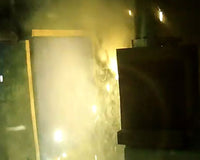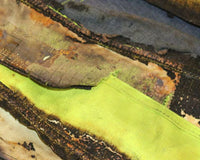Content Library

Linsey's Story: Celebrating International Women in Engineering Day
The second interview in our series to celebrate #INWED shines the spotlight on Linsey, Project & Development Engineer for Wootton and Wootton.
A big thank you to Linsey for sharing such a fascinating journey to her current role in a smaller size business, with such a wide remit. Fantastic words of advice and also shows how important female mentors and role models are for inspiring and guiding future female generations “We can do anything a man can do…”

Sandie's Story: Celebrating International Women in Engineering Day
The first in our Series of interviews celebrating International Women in Engineering Day featuring our female colleagues in engineering is with Sandie Jones, IAMA Field Service Engineer at ABB UK.
For anyone considering an engineering pathway, a great piece of advice from Sandie: “grasp all of the Education that you can that is on offer with both hands – the key to success is Education”.

5 Arc Flash Solar Panel Risks for Industry Personnel
The risk is so pronounced within the Solar Industry due to the DC circuits found within typical PV installations, which can both generate and sustain arcs. DC circuits present a greater challenge than AC circuits due to the constant-current source rather than constant voltage, which makes calculating arc energies difficult.
So just what are some of the biggest Arc Flash risks for Solar Industry Personnel?

Arc Flash Safety Procedures
If you’re already familiar with what an Arc Flash is and what type of training, you might need to have in order to protect yourself from it the next thing you might be wondering is if there are any specifically related to Arc flash Safety Procedures.
In this article I’ll be going over the top 2 Arc Flash Safety procedures that you need to know in order to protect yourself and your team from Arc Flash.

An Introduction to Arc Flash Training

What is Arc Flash PPE?
In our last article we discussed what an arc flash really is and why you don’t want to be exposed to one, but we didn’t really talk about how to protect ourselves from one.
This week we go into detail on a particular segments which could save your life during an Arc Flash Event, Arc Flash PPE.

What causes an Arc Flash?

Personal Protective Grounding for Electrical Safety
In fact, in most places temporary protective ground cables are not even thought of as PPE, but that is exactly what they are! Notice the title refers to personal protective grounding, well you are the person and it’s for that very reason you need to understand these next few concepts.

Can rubber insulating gloves protect you from Arc Flash?

How to choose Arc Flash PPE
But what do you need to consider before you pick it out? Well, we have chosen 3 key concepts to look at before you don the “space suit” and march out for lift-off.

How does Flame Resistant Clothing work?
Flame Retardant garments are a necessity for any employee who may be at risk of coming into contact with Electric Arc Events, Flash Fires or combustible dust explosions to protect the skin against burns and minimise the risk of injury.
Burns are a common health & safety issue in some workplaces, especially those that work with naked flames, chemicals and high temperatures.

What's the difference between Treated Fabric and Inherent Fabric?
The main difference between these two fabrics is the process that is used at the final stage in order to make the product flame resistant, but which type of fabric should you opt for given your working environment?




